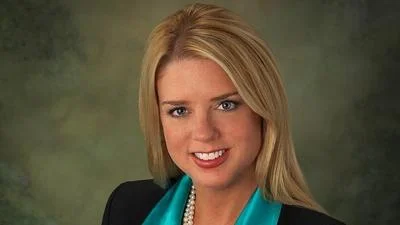The Congressional Record is a unique source of public documentation. It started in 1873, documenting nearly all the major and minor policies being discussed and debated.
“OPIOID EPIDEMIC” mentioning the U.S. Dept of Labor was published in the Senate section on pages S2554-S2555 on May 8, 2018.
The Department provides billions in unemployment insurance, which peaked around 2011 though spending had declined before the pandemic. Downsizing the Federal Government, a project aimed at lowering taxes and boosting federal efficiency, claimed the Department funds "ineffective and duplicative services" and overregulates the workplace.
The publication is reproduced in full below:
OPIOID EPIDEMIC
Mr. BROWN. Mr. President, everyone in this Chamber knows how bad the opioid epidemic is. In my State, we have the second highest number of opioid deaths per capita in the country next to West Virginia. In my State, we also have more people die of opioid overdoses than any other State in the country. On average, 11 people died yesterday, 11 will die today, 11 will die tomorrow, and 11 will die on Thursday of opioid overdoses.
Last month at the Cleveland City Club, I called for a comprehensive, coordinated, and sustained public health campaign to fight addiction through education, prevention, treatment, and recovery.
We know from history that we cannot arrest or execute our way out of this crisis, whether in Montana or in Ohio. I met with law enforcement officers in every corner of my State. They shoulder a huge burden. They all tell me the same thing: They need resources to fight this. That is why I joined Senator Portman and a bipartisan group of our colleagues on the POWER Act--to get State and local law enforcement the high-tech tools they need to effectively screen for dangerous opioids, such as fentanyl.
We also know from history that those enforcement tools are just one piece of this fight. We need a comprehensive approach, and that means recognizing how important treatment and rehabilitation are. We don't write off thousands of Ohioans struggling with addiction. We simply don't write off entire communities. That is where drug courts come in. These courts are partnerships between law enforcement and treatment providers. They are spearheaded by judges who see the same people back in their courtrooms over and over again for drug offenses. These judges realized that traditional court proceedings simply were not working. They weren't curing people's addictions. Fines and jail time don't cure a medical condition. So judges set up these special courts where participants agree to enter treatment programs and are strictly supervised by law enforcement. If they successfully complete the program, instead of going to prison, they have a graduation ceremony.
We have seen this model work successfully for veterans. There are hundreds of these courts across the country, which are built around counseling and treatment. Veterans who get into trouble with the law often face unique issues, such as PTSD.
My office recently visited the first Federal Veterans Court in the Southern District of Ohio, in Dayton. We saw the difference it made in the lives of men and women who served this country. The court was created by my friend, Judge Michael Newman, with the support of Chief Judge Edmund Sargus. It works with the VA to help address the issues veterans are struggling with. My staff met with Page Layman, a veterans justice outreach coordinator who helps the participants in the program. He talked about how one of the participants in the court had limited transportation options and lived in a rural area, so Mr. Layman drove to meet him at the local library. Judge Newman reports that 49 veterans have graduated from the program with their charges dropped and are now leading healthier lives.
We have the same opportunity with drug courts. The Ohio Office of Criminal Justice Services studies these courts. They found that drug courts enhance treatment, increase collaboration in the community, and save taxpayers money.
My staff and I met with judges across Ohio who are helping people break the cycle of drug use and crime. Earlier this year, we talked with Hocking County Municipal Court Judge Fred Moses while he was in town as a State of the Union guest of Representative Steve Stivers of Ohio. He started an innovative drug court program just outside Chillicothe, OH, in 2012. As a judge, he saw the opioid epidemic coming years before most folks in Washington saw it. He started the first medication-assisted drug court program certified in my State. Five years later, his programs are reuniting families, cutting down on repeat offenses, and helping participants get jobs.
He and his staff are improving the lives of people in Southeast Ohio and serving as a model for other drug courts around the State and country. Since the program began, more than 30 other judges have visited Hocking County to learn about its success. Now we are seeing similar success all over Ohio.
Tuscarawas County has two drug courts--COBRA, in the Common Pleas Court, and the New Philadelphia Municipal Recovery Court. Judge Elizabeth Lehigh Thomakos runs the COBRA court, which held its 125th graduation. One graduate said:
When I couldn't get clean, you helped me get clean. You guys believed in me when I couldn't believe in myself.
Another:
My daughter has her mamma back. A healthy mom, hard-working, motivated, goal-oriented mom, who smiles again and is grateful in all she does. By this program shaping my future, it has also shaped hers.
The Recovery Court in New Philadelphia is run by Judge Nanette DeGarmo VonAllman. She hears so many stories like that one. She told the Times Reporter--the newspaper in Tuscarawas County--``We try to give them and their families hope: that treatment works and people do recover.'' Programs all over Ohio and all over the country are offering families that hope.
In Cleveland, the Cuyahoga County Drug Court, under Judge David Matia, has graduated more than 300 people. Both that court and the Cleveland Municipal Drug Court operate under the Stephanie Tubbs Jones Greater Drug Court umbrella, named for my former colleague.
In Marion, OH, Common Pleas Court Judge Jim Slagle, a longtime friend of mine, held a graduation ceremony for eight graduates at the end of last month. Jennifer, one of the women who spoke, talked about her granddaughter. She said:
The most challenging part was admitting I needed this.
When she found out her granddaughter was going to be placed in foster care:
I knew I had to do something. I needed to get myself together. I had to do it for her.
She has now been clean for 2 years. She has custody over her 18-
month-old granddaughter.
These are the kinds of success stories we hear all over the State and all over the country. If we are successful in this fight, hundreds of thousands of fewer Americans will use opioids, but we will also have hundreds of thousands more who have used opioids but whose lives are not lost or ruined. They are going to be living with and managing their addiction. That is why we need to expand and build on these approaches.
I am also working with my Republican colleague, Senator Capito of West Virginia, on bipartisan legislation--the CARE Act--to combine existing resources from the Departments of Labor and Health and Human Services to fund combined addiction treatment and workforce training efforts.
I hear the same thing from mayors from New Philadelphia, Middletown, Chillicothe, and Piqua: Employers can't fill openings because workers can't pass drug tests. Ohioans struggling with addiction--even those who have completed successful programs like these drug courts--can't find jobs. Our bill will help those Americans continue their recovery with good jobs that provide stability.
The government is spending money on drug treatment, mostly through Medicaid, and the government, through the Department of Labor, is spending money on job retraining. Why not put them together so that people, while they get clean and get whole, are ready to go to work because they have had that job training?
I hope my colleagues will join me in supporting the CARE Act and finding ways to support successful drug court programs around the country.
____________________








